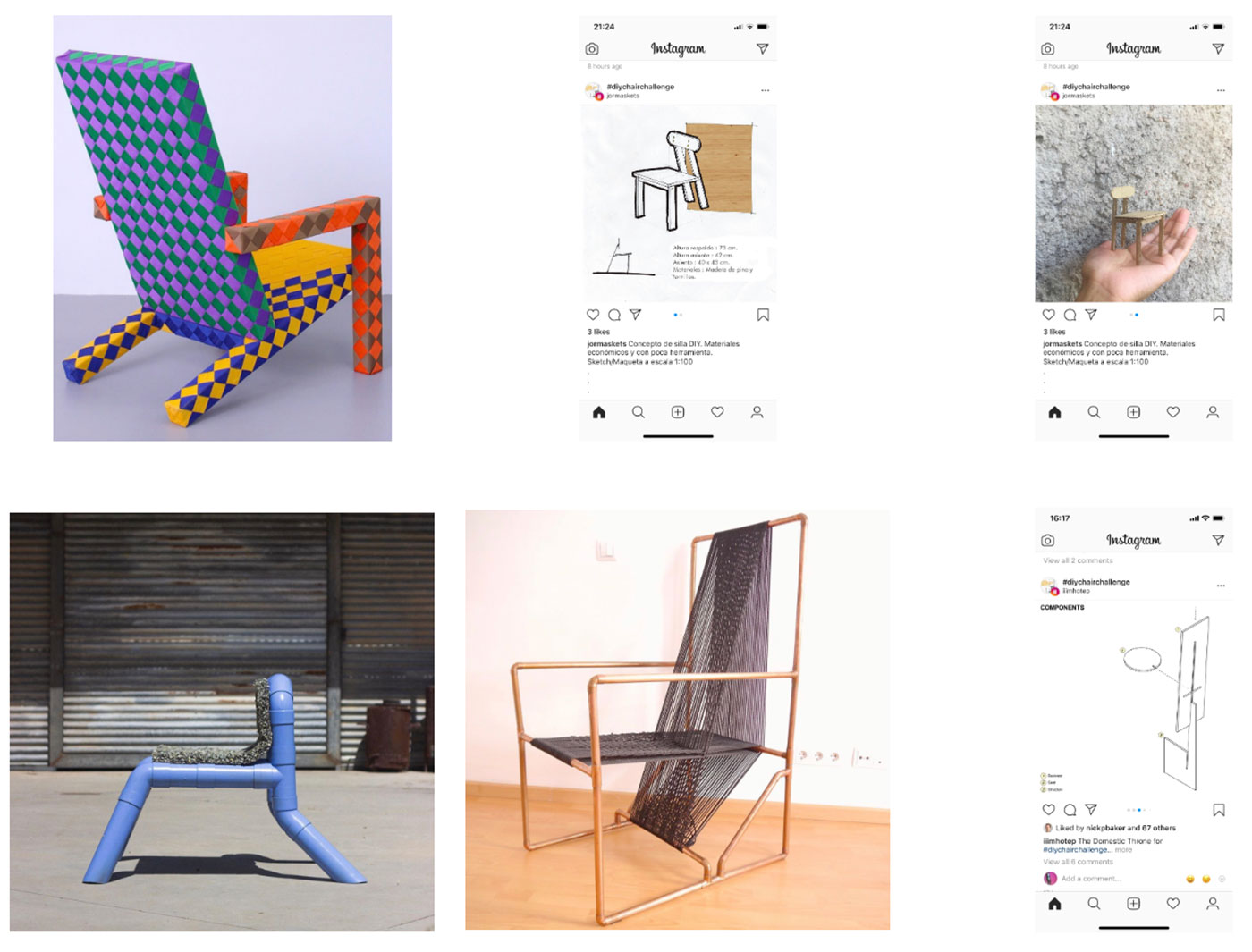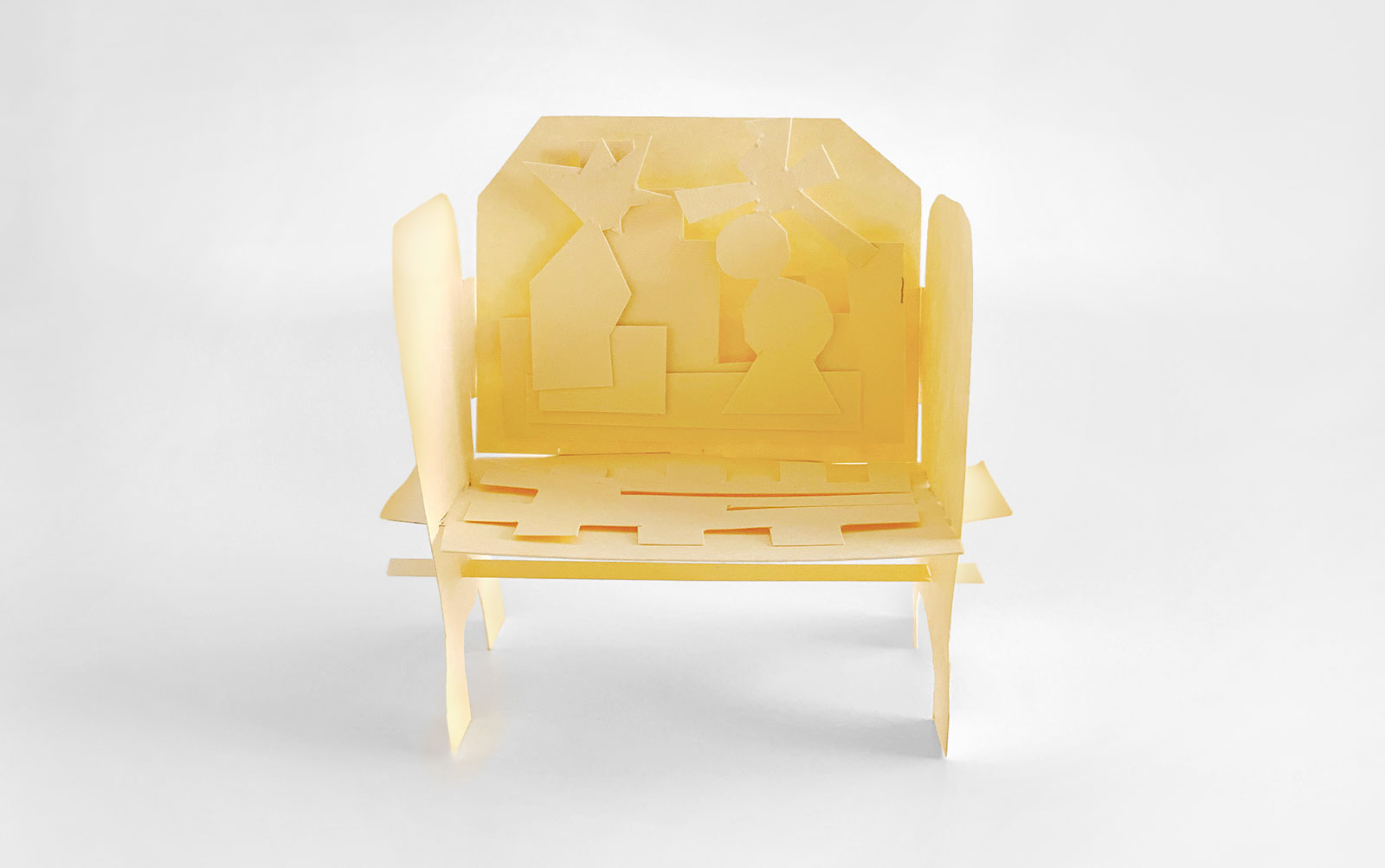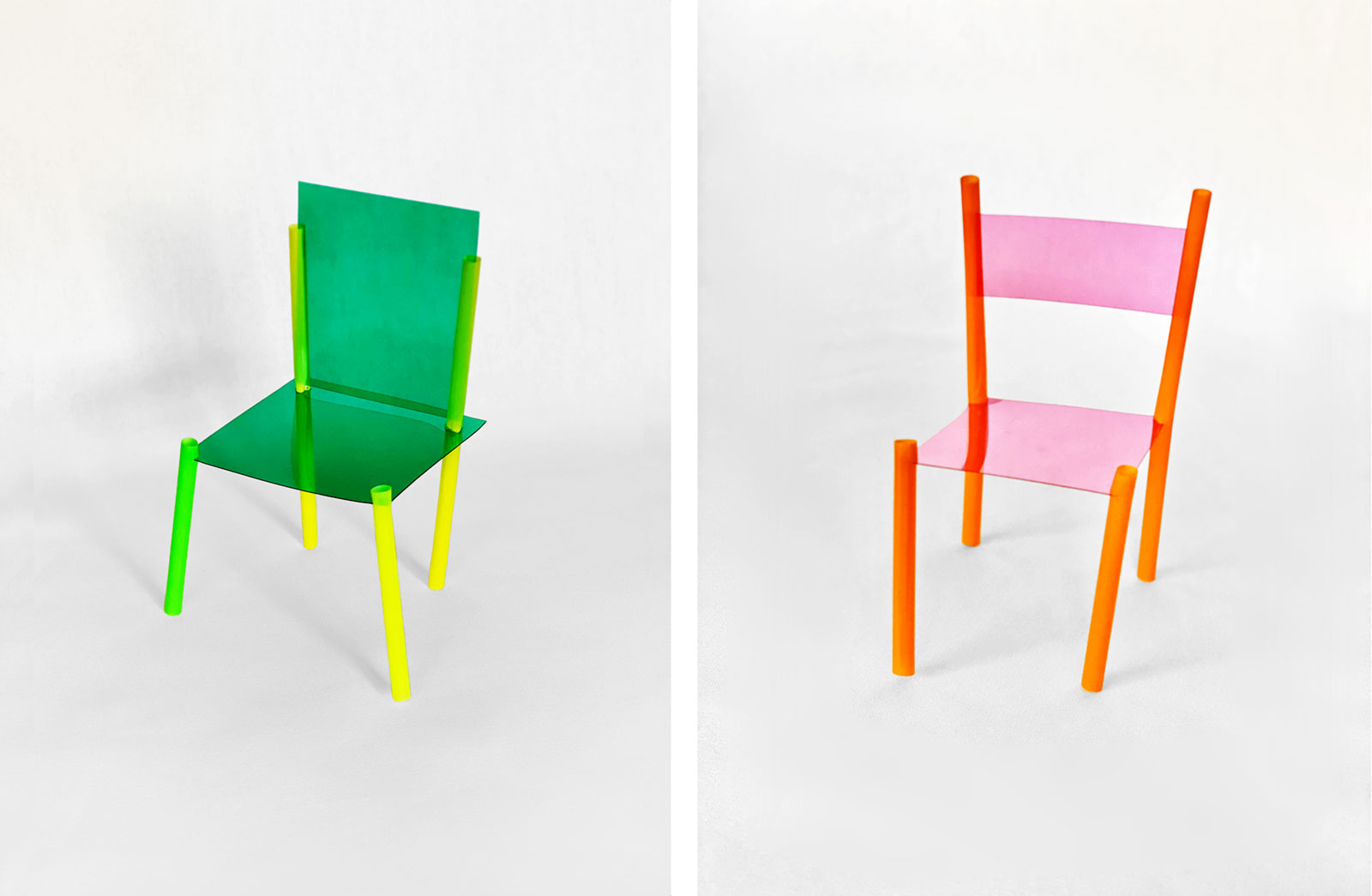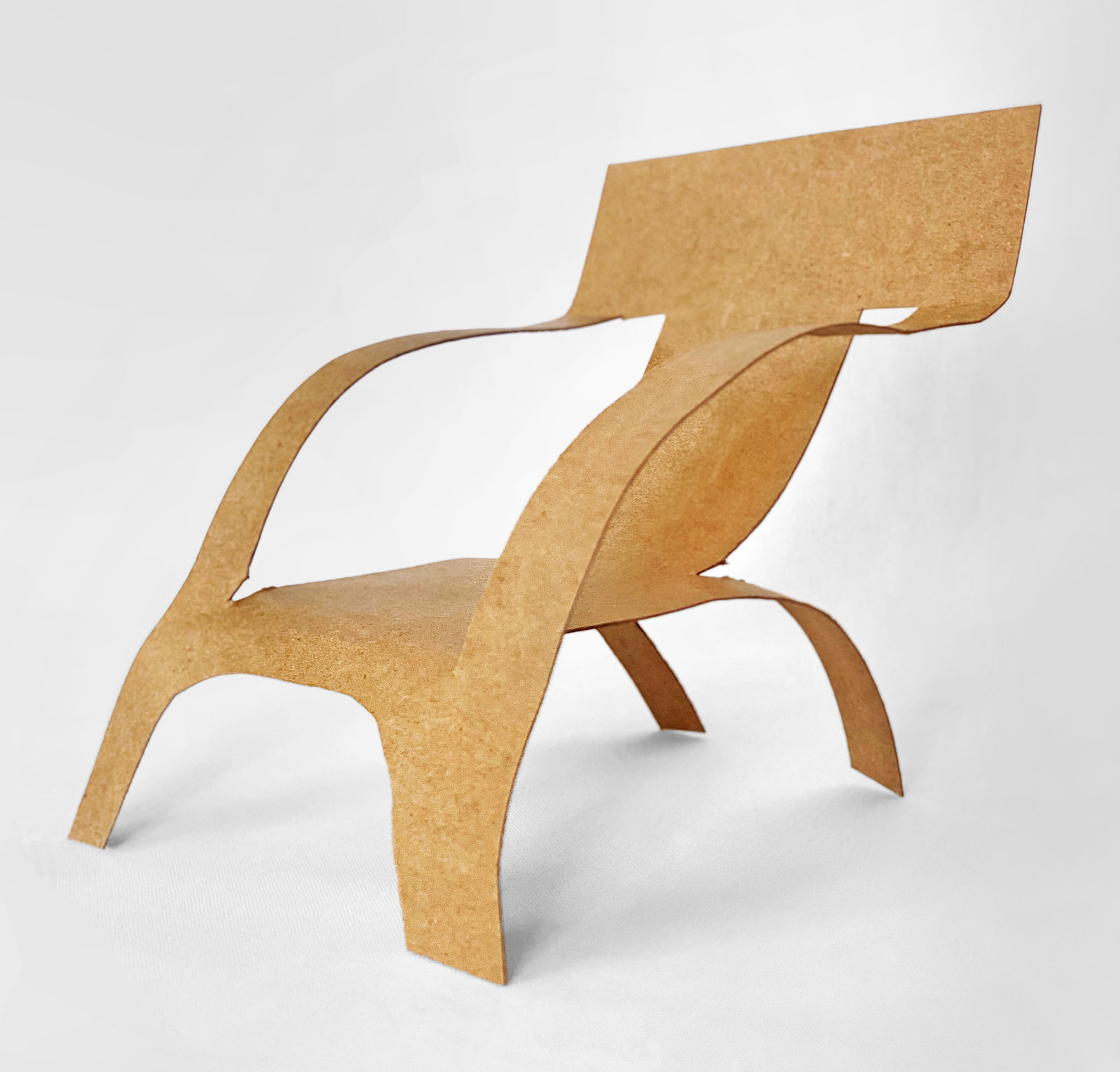September 18, 2020
By Zoe Welch, education manager
I think about chairs. A lot. It started in May 2019, when I gave a tour to a group of students who live with autism—I thought a singular focus for the tour, directed at something super familiar (like chairs), would make for an engaging experience for the students. And it was! The day was a smash hit, and I decided to run with the idea.

And run I have. Currently, I have 39 screenshots of chairs on my phone, with another 63 that I've transferred to my computer files. I even took a picture of some twigs on the ground because, to my eye, they looked an awful lot like a chair. I follow chair designers on IG, as well as a collab that some of them started called the #diychairchallenge; it took me over 3 hours to watch the excellent and fascinating 90-minute Vitra documentary, Chair Times, which I plan on watching again. At this point, I'm pretty sure my interest has migrated from professional fascination to personal fixation.

To be fair, the average American adult sits 2,372.5 hours per year, almost 99 days, so perhaps giving some thought to what we sit on is understandable. And for the same reason, I think I can also be forgiven for tumbling down a virtual rabbit hole about anthropometry as it applies to chair design. Anthropometrics, the study of human body measurements, is thought to have had its start in the practice of furniture design around the 1950s, when American industrial designer Henry Dreyfuss, known for a design approach that valued science over style, popularized the field as a design principle, placing human factors at the heart of his work and inclusively—men, women and children, the disabled, and the elderly—to improve the use and experience of day-to-day products to the greatest extent possible. As a designer, Dreyfuss used empathy, placing himself where his "user" would be:
I have washed clothes, cooked, driven a tractor, run a Diesel locomotive, spread manure, vacuumed rugs, and ridden in an armored tank. I have operated a sewing machine, a telephone switchboard, a corn picker, a lift truck, a turret lathe, and a linotype machine. When designing the rooms in a Statler hotel, I stayed in accommodations of all prices. I wore a hearing aid for a day and almost went deaf. (Designing for People, 1955)
Dreyfuss designed lounge seating for Pullman passenger trains, so you can bet he sat in chairs too.

This past year, I expanded the chair concept, developing two STEAM x Design (SxD) pilots: one for middle school students in ESE (exceptional student education) classrooms, and one for neurotypical students. Based on core science, technology, engineering, art, and math applications, The Wolfsonian's SxD program awakens students to how good design relies on all 5 STEAM pillars working together.
Each classroom fieldtrip started with a group conversation about chairs—what about them?—followed by a gallery tour to look at chairs together, noticing their materials, how they're assembled, who they might be designed for, for use where, etc.; then, in a hands-on workshop, students applied all we'd discussed so far, interpreting their observations and suggesting their design improvements through drawing and maquettes. I had a few maquettes on hand that I'd made to show them how the craft materials can be used. At the beginning of each fieldtrip, I cautioned the students about my growing obsession with chairs, and that they might develop one too. Before boarding the bus to leave, one fourth grader came up to me and said, "Miss, Miss, you were right. I'm really interested in chairs now!" Music to my ears.

Chairs are complex structures and are often considered the litmus test for designers as well as the test bed for new technologies. Chairs carry within them the element of compromise, because one chair is made for all kinds of different shapes and sizes. So, I'm sticking with them. For this school year, as all our K–12 programs go virtual, I'm expanding the chair idea again with a 4-module SxD program that includes a couple focused on chairs as the departure point for discussing the intersection of art and design with STEM basics. Each module includes a workbook, a video, craft supplies, and a virtual classroom visit.
Naturally, this has only fed my chair madness! I currently have 19 websites bookmarked and 165 files in my curriculum folders on my laptop; I use internet search terms like "math for chair design"; I've scanned a Master's thesis entitled "The Beauty of Fit: Proportion and Anthropometry in Chair Design"; and I just read a research paper called "Geometry of Curves and Surfaces in Contemporary Chair Design," which, as part of its analysis, looks at some of my favorite chairs designed by greats such as Alvar Aalto, Mies van der Rohe, Marcel Breuer, Arne Jacobsen, and Charles and Ray Eames. This, and probably more, will be winnowed down into what SxD students will dive into with me this year.

Students will learn about zero-waste design in one SxD chair module and discover how to transform a 2-dimensional surface into 3 dimensions in the other. For the 2D–3D exercise, I'm using the Gerald Summers armchair made by bending plywood. For zero waste, a great chair to refer to is Alvar Aalto's Paimio armchair 41. In addition to learning about these STEM concepts through chairs, students are also asked to redesign a chair, improving on its design by giving particular attention to dimensions and proportion (i.e. anthropometrics and fractions); what we mean by form and function (design and engineering); investigating manufacturing and supply chain practices (ethical design); thinking about local climate and how it impacts durability (ecology); and calculating the load-bearing capacity required to sustain their own weight (math and physics).
Students are also asked to come up with their own designer statement about chairs, with a few examples to help them out, such as maverick Italian designer and design activist Enzo Mari's iconic response to "What is good design?":
Good Is Sustainable | Good Is Accessible | Good Is Functional | Good Is Well Made | Good Is Emotionally Resonant | Good Is Enduring | Good Is Socially Beneficial | Good Is Beautiful | Good Is Ergonomic | Good Is Affordable.
Another quote comes from Donald Judd, who made his own furniture when he moved to Marfa (way before it was trendy) in the far reaches of the Texas desert and found slim pickings for furniture shopping; Judd believed that the "art of a chair is not its resemblance to art, but is partly its reasonableness, usefulness, and scale as a chair," stating further that a good chair "does what it needs to do with the littlest fuss possible."
When I began writing these modules, I started the first draft with a pithy statement about chairs being, basically, a structure made with 4 legs (though sometimes only 3), a seat, a back (without which it's a stool), and sometimes arms. As I considered chairs more deeply, I realized I had to ditch the pith. It's tricky to describe the identifying markers of a chair, because a stool, with or without a back, also has 4 legs (usually); so, is it about height? To complicate matters further, a chair might have no legs at all—the bean bag chair, the zig zag chair, the S, the Tulip, and the Wiggle. These all make the conversations with students all the better.

But all chairs have a few things in common. Varied as they are in design, chairs have personalities, and these little pieces of sculpture can tell us about the times in which they were made; who made them; who they were made for; what kind of technology and tools the maker has on hand; and some of the values the designer had in mind. And they also do another thing the same way: they say, have a seat, sit, take a load off.
For now, however, I'm aware that I've abundantly contributed to my annual 2,372.5 hours of sitting, so it's probably a good idea for me to get up and go for a walk!
MDCPS teachers or students interested in participating in our SxD curriculum with your class are welcome to fill out a Request Form.
